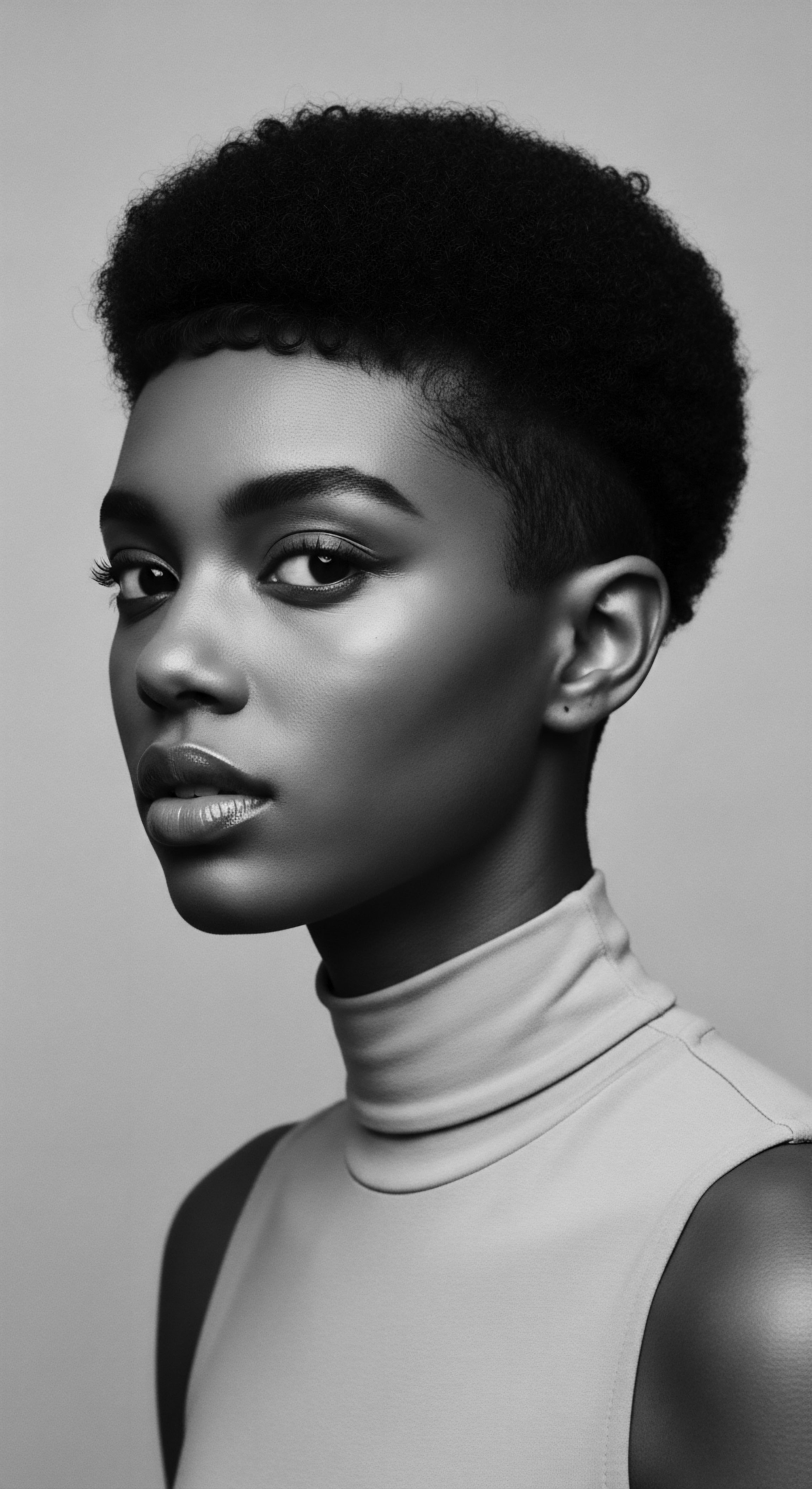
Fundamentals
The living library of Roothea recognizes the deep, ancestral connections that bind us to our physical selves, and within this profound exploration, Keratin stands as a foundational concept. At its simplest, Keratin represents a family of structural proteins, the very building blocks that lend strength and resilience to our hair, skin, and nails. This fundamental substance is not merely a biological component; it is a testament to the enduring design of the human form, a design that has sustained generations through diverse environments and historical epochs. Think of it as the primordial fiber, the very essence of the strand that has journeyed through time with humanity.
Alpha-keratin, the form primarily found in mammalian hair, including our own, is composed of polypeptide chains coiled into helical structures. These helices intertwine, forming tough, insoluble filaments. Such inherent strength allows hair to withstand the elements, to be shaped, adorned, and to persist as a record of individual and collective experiences. It is this fibrous nature that grants hair its protective qualities, shielding the scalp from sun and cold, while also allowing for the intricate styling that has marked human cultures for millennia.
Keratin, at its heart, is the enduring proteinaceous architecture that underpins the strength and adaptability of hair across all human lineages.
Across ancient civilizations, while the precise molecular structure of Keratin remained unarticulated, an intuitive comprehension of hair’s intrinsic properties certainly guided care practices. Early human communities observed hair’s capacity for growth, its ability to protect, and its susceptibility to damage. They recognized that hair, when cared for with intention, could remain vibrant and robust. This empirical wisdom, passed down through oral traditions and communal rituals, formed the bedrock of ancestral hair care.
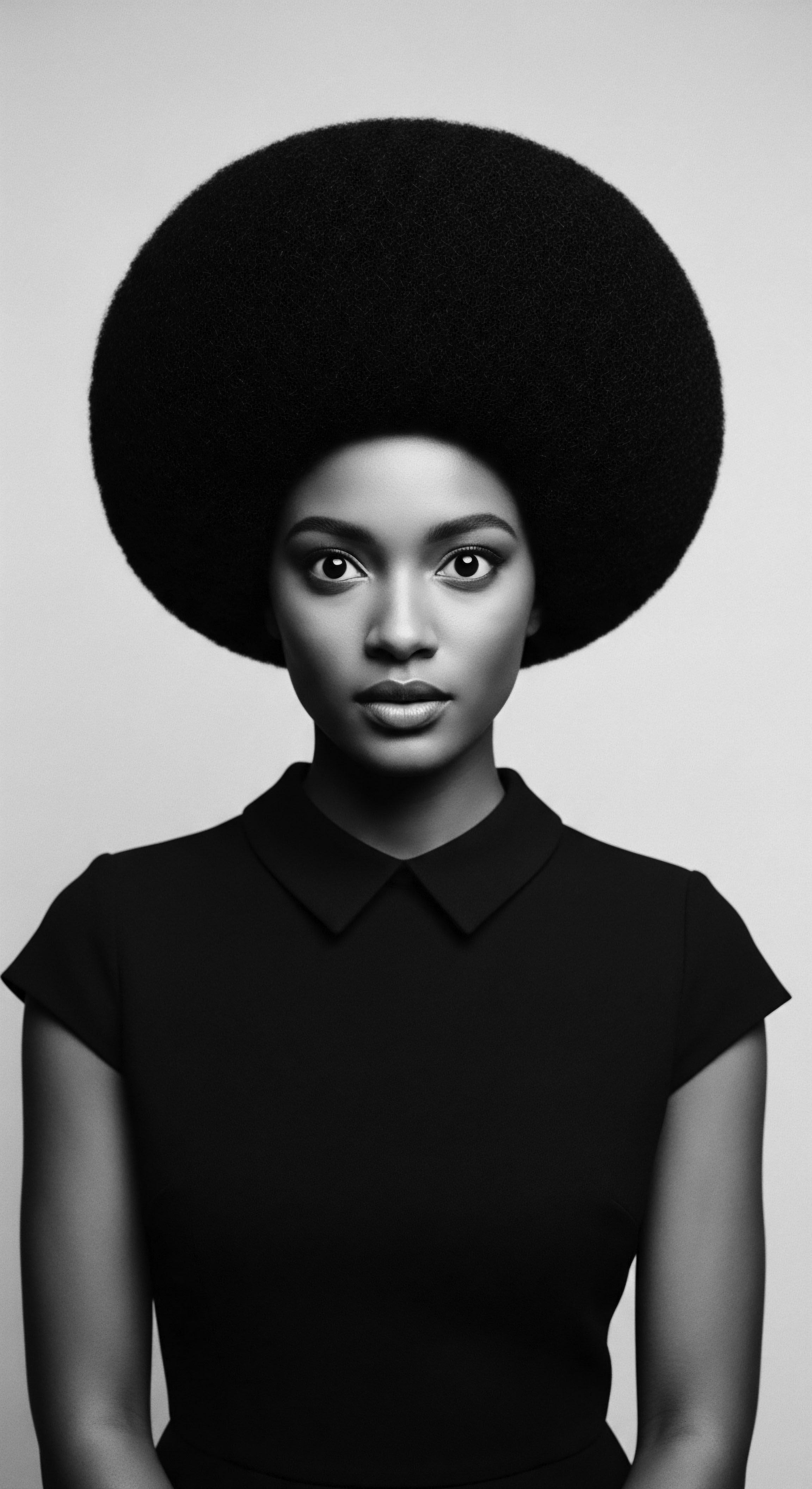
The Elemental Strand ❉ An Ancestral View
For our ancestors, hair was far more than a simple biological outgrowth; it was a living conduit, a tangible connection to the spiritual realm, and a visible marker of identity. The integrity of hair, its sheen, its length, and its strength, were often seen as reflections of a person’s vitality, status, and connection to their lineage. Thus, the preservation of hair’s inherent resilience, which we now understand is rooted in its Keratin composition, was a matter of deep cultural and personal significance. The very act of tending to hair was a ritual, a quiet acknowledgment of its sacred value.
Consider the practices of various African societies, where hair was meticulously styled and adorned. These traditions, spanning thousands of years, demonstrate an innate understanding of how to maintain hair’s structural integrity. Protective styles, such as braids and twists, minimized manipulation and exposure, thereby preserving the Keratin bonds within each strand. The application of natural oils, butters, and clays, derived from indigenous flora, likely contributed to maintaining the hair’s moisture balance and reinforcing its external cuticle, which is also rich in Keratin.
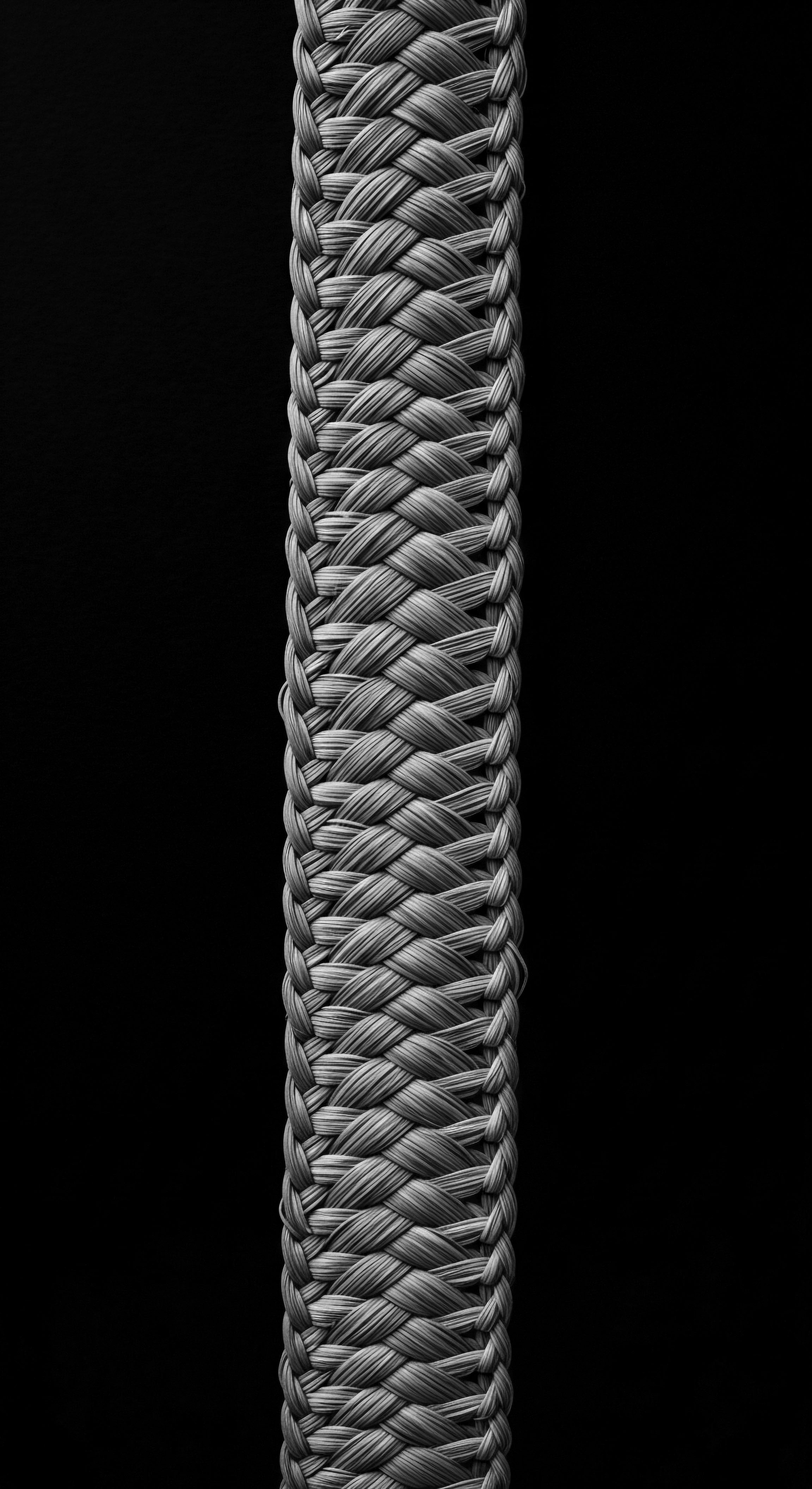
Early Human Hair Observations
Long before microscopes unveiled the helical structures of Keratin, human beings developed sophisticated methods of hair assessment. Observing hair’s response to different environments – how it behaved in humidity, how it reacted to various plant extracts, or how it felt after a cleansing ritual – informed a complex body of knowledge. This observational science, honed over countless generations, allowed for the development of care regimens that intuitively supported the hair’s proteinaceous core. The communal gathering for hair styling, a widespread practice in many African cultures, was not just a social event; it was a transfer of this embodied knowledge, a living library of techniques designed to honor and preserve the hair’s natural strength.
- Observation of Resilience ❉ Ancient peoples recognized hair’s capacity to endure, noting its ability to withstand stretching and manipulation.
- Seasonal Adaptations ❉ Hair care shifted with climate, reflecting an understanding of how environmental factors affected hair’s strength and appearance.
- Plant-Based Fortification ❉ Indigenous communities utilized specific herbs and natural ingredients to strengthen hair, intuitively supporting its protein structure.
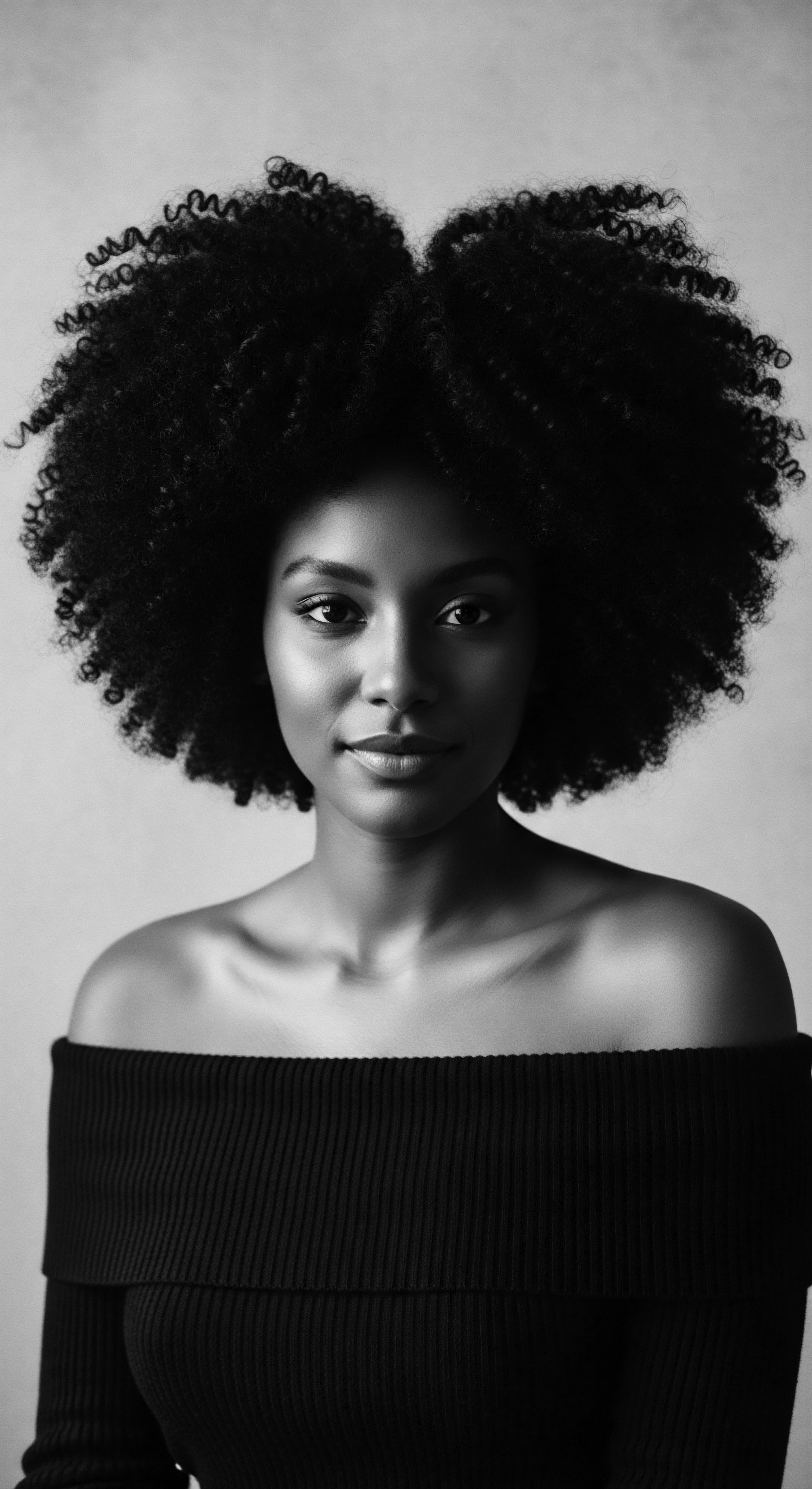
Intermediate
Moving beyond the foundational understanding, the concept of Keratin deepens, revealing its profound significance as the primary constituent of hair, shaping its very identity and capabilities. Keratin is not a singular entity; it is a complex family of fibrous proteins, primarily alpha-keratins in human hair, forming the robust architecture that allows for the remarkable diversity of hair textures observed across the globe. Each strand, from the straightest filament to the tightest coil, owes its distinct character to the intricate arrangement and bonding of these Keratin proteins.
The hair shaft, the visible part of the strand, is essentially a keratinized structure, meaning it is composed of dead cells packed with Keratin. These cells originate from the hair follicle, which is the living organ beneath the scalp. As cells multiply and move upwards within the follicle, they undergo a process of keratinization, filling with Keratin proteins and losing their nucleus, eventually forming the hardened, protective hair fiber. This continuous process of growth and keratinization ensures a constant renewal of our hair, a testament to the body’s innate capacity for self-preservation.
Keratin’s architectural marvel, particularly its disulfide bonds, fundamentally determines the inherent curl pattern and resilience of textured hair.
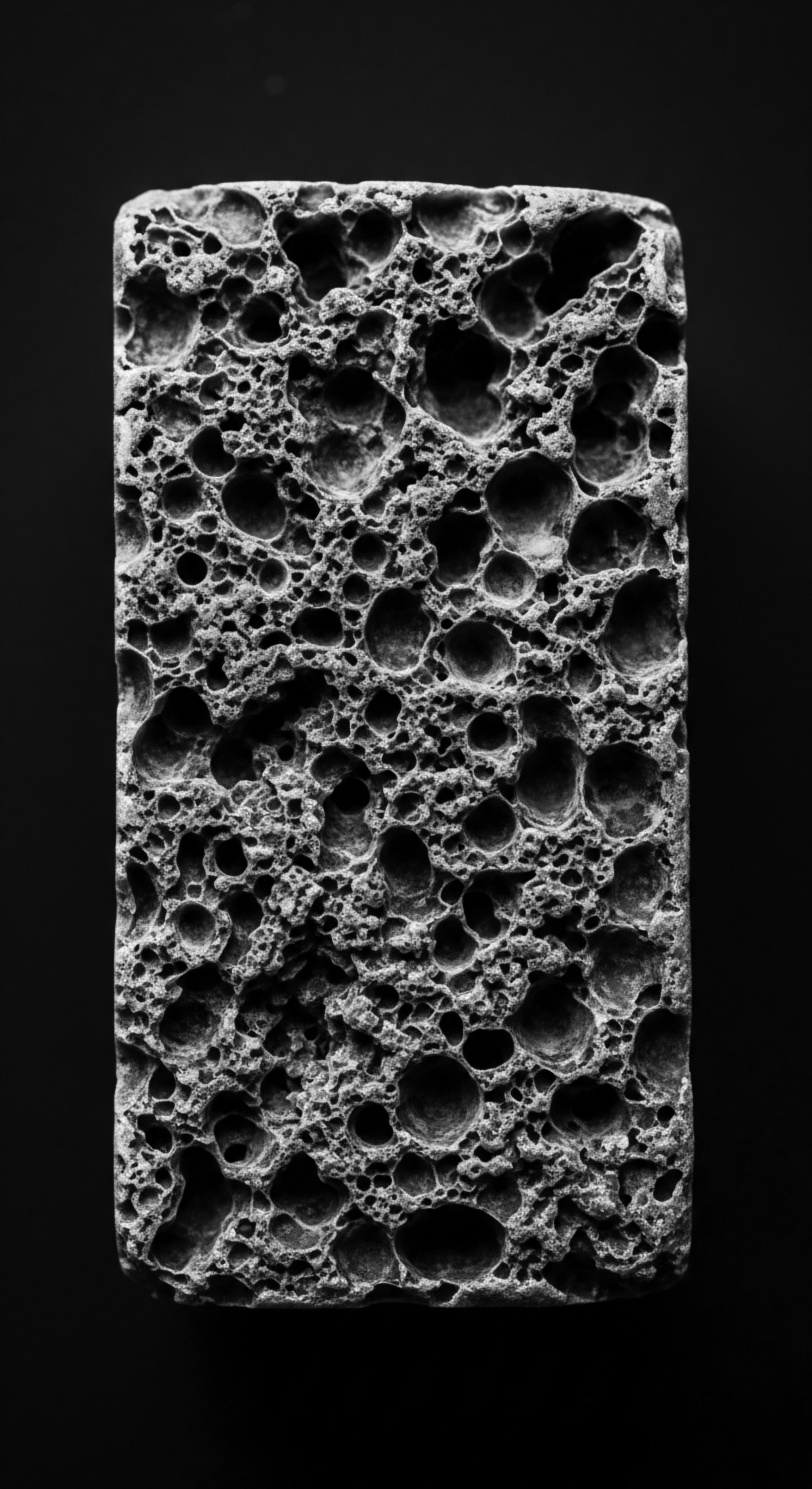
The Architecture of Resilience ❉ Keratin’s Structure
The physical properties of hair, including its strength, elasticity, and curl pattern, are directly attributable to the specific organization of Keratin proteins and the bonds that hold them together. Within the hair’s cortex, the central and thickest layer, Keratin proteins assemble into coiled-coil structures, which then form larger intermediate filaments. These filaments are cross-linked by strong chemical bonds, most notably Disulfide Bonds. These covalent bonds, formed between sulfur atoms in the amino acid cysteine, are remarkably stable and contribute significantly to hair’s overall mechanical strength and its ability to resist deformation.
The arrangement and density of these disulfide bonds are particularly significant for textured hair. In highly coiled or kinky hair, the hair follicle is often more elliptical or flat in cross-section, leading to an asymmetrical distribution of Keratin and a greater number of disulfide bonds forming across the hair shaft. This unique bonding pattern pulls the hair into its characteristic helical or coily shape, imbuing it with a distinct springiness and volume. The hydrogen bonds, while weaker and temporary, also play a part in stabilizing the Keratin alpha-helices and are responsible for temporary changes in curl, such as those caused by humidity.
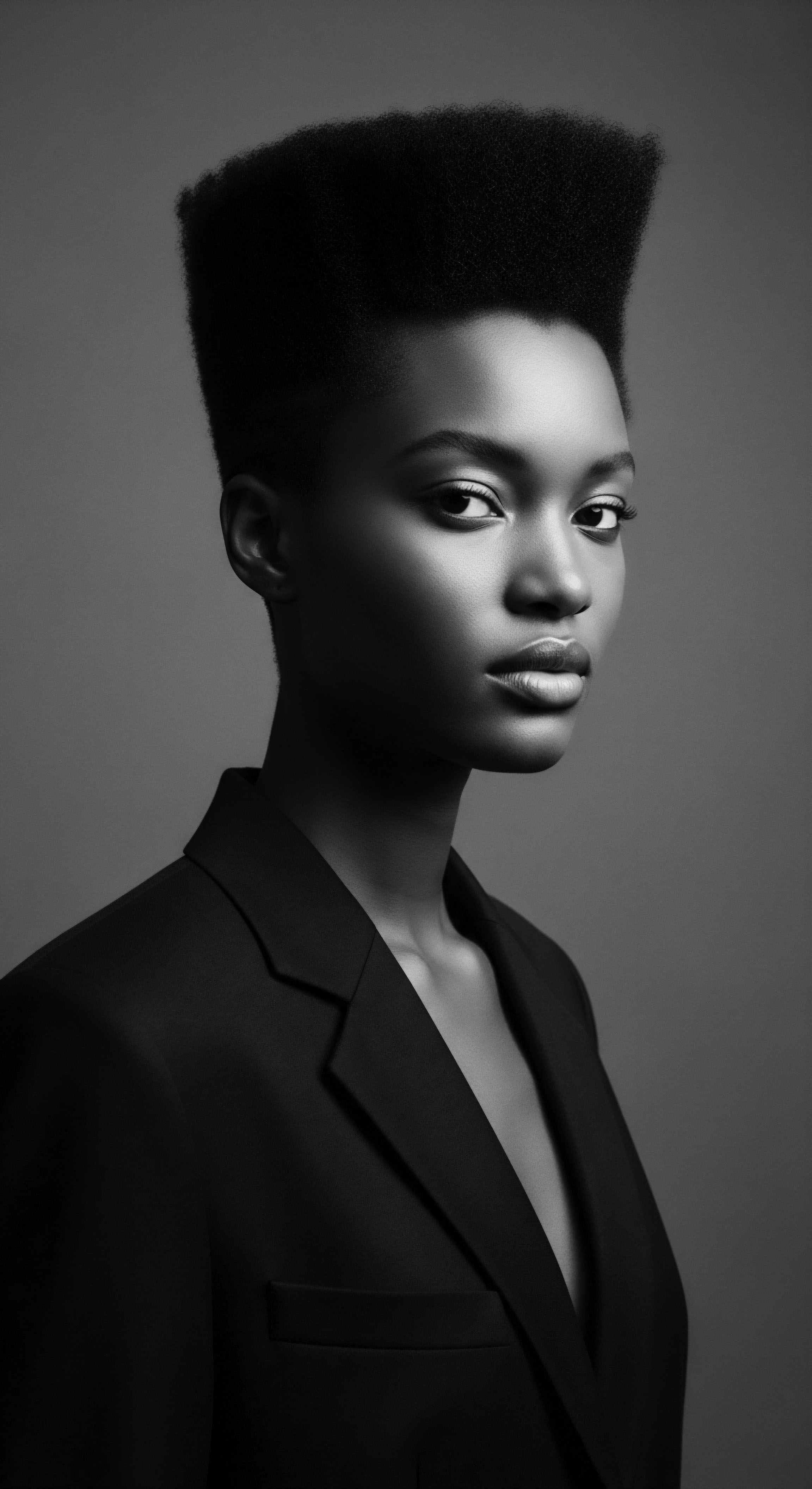
Ancestral Fortification Rituals
Ancestral hair care practices, developed over millennia, demonstrate an intuitive mastery of supporting Keratin’s integrity, even without the language of modern biochemistry. Communities across the African diaspora, for instance, employed sophisticated techniques that, in hindsight, align perfectly with contemporary understanding of protein maintenance. These were not mere cosmetic applications; they were acts of profound care, deeply interwoven with communal identity and survival.
For instance, the use of various plant-based emollients and fortifying agents, such as Shea Butter, Coconut Oil, and indigenous herbs, served to protect the hair’s outer cuticle, which is rich in Keratin. A healthy cuticle, with its overlapping Keratinized cells, acts as a protective shield for the inner cortex, preventing moisture loss and minimizing mechanical damage. When the cuticle is compromised, the inner Keratin structures become vulnerable, leading to dryness and breakage. Traditional practices, through their emphasis on sealing and conditioning, inadvertently preserved this outer layer, thus safeguarding the hair’s core strength.
Furthermore, the prevalence of protective styling, such as braiding, twisting, and wrapping, across many African cultures, minimized daily manipulation and exposure to environmental stressors. This reduced the strain on Keratin bonds, helping to maintain the hair’s structural integrity over longer periods. These practices allowed hair to retain its length and vitality, a crucial aspect of beauty and status in many societies.
The deliberate choice of specific ingredients and styling methods within ancestral communities often reflected a deep understanding of hair’s needs. This knowledge was transmitted orally, through observation, and by participation in collective hair care rituals.
| Ancestral Practice Protective Styling (Braids, Twists, Wraps) |
| Keratin-Supporting Mechanism Minimizes mechanical stress on Keratin bonds; reduces exposure to environmental damage. |
| Cultural Context / Significance Often signaled marital status, age, or tribal affiliation; served as a means of communication and resistance. |
| Ancestral Practice Application of Natural Oils/Butters (Shea, Coconut) |
| Keratin-Supporting Mechanism Seals the Keratinized cuticle, reducing moisture loss and preventing protein degradation. |
| Cultural Context / Significance Ritualistic applications, often associated with community bonding and ancestral connection. |
| Ancestral Practice Herbal Rinses and Clays (e.g. Chebe, Rhassoul) |
| Keratin-Supporting Mechanism Provides minerals and potentially protein-like compounds that fortify hair, cleanses gently. |
| Cultural Context / Significance Part of holistic wellness, linking hair care to the earth's bounty and spiritual purity. |
| Ancestral Practice These enduring practices underscore a profound, intuitive wisdom concerning hair's inherent protein structure and its preservation. |
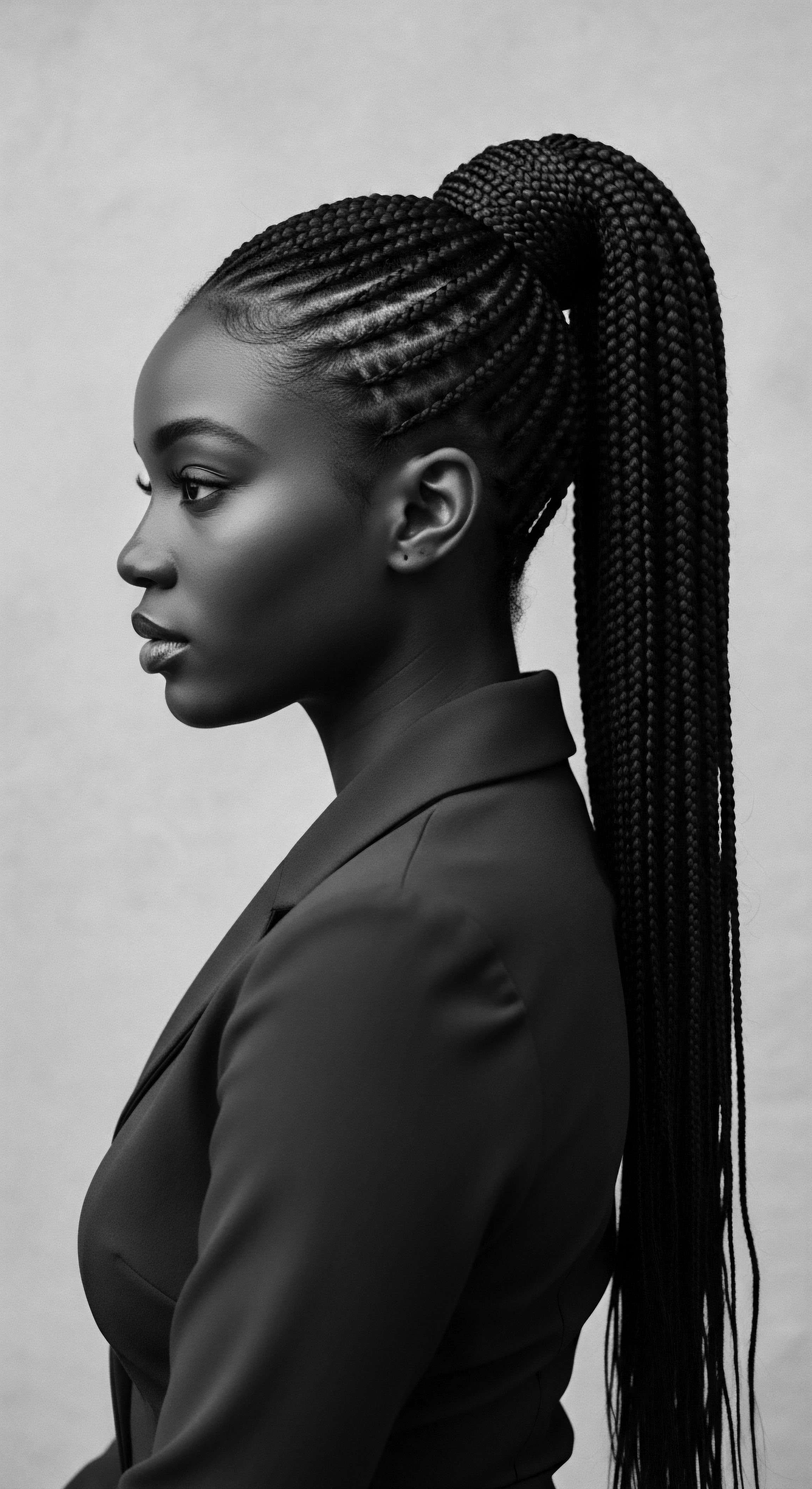
The Living Legacy of Care
The continuity of these practices into contemporary textured hair care is a testament to their efficacy and cultural resonance. Many modern natural hair movements draw directly from these ancestral traditions, seeking to restore hair to its unadulterated state, honoring its inherent Keratin-based strength and unique curl patterns. This reconnection with heritage is not simply about aesthetics; it is about reclaiming identity, resisting imposed beauty standards, and affirming the intrinsic value of textured hair as a symbol of resilience and beauty. The deep respect for ancestral knowledge ensures that understanding Keratin’s role is not just a scientific pursuit, but a cultural affirmation.
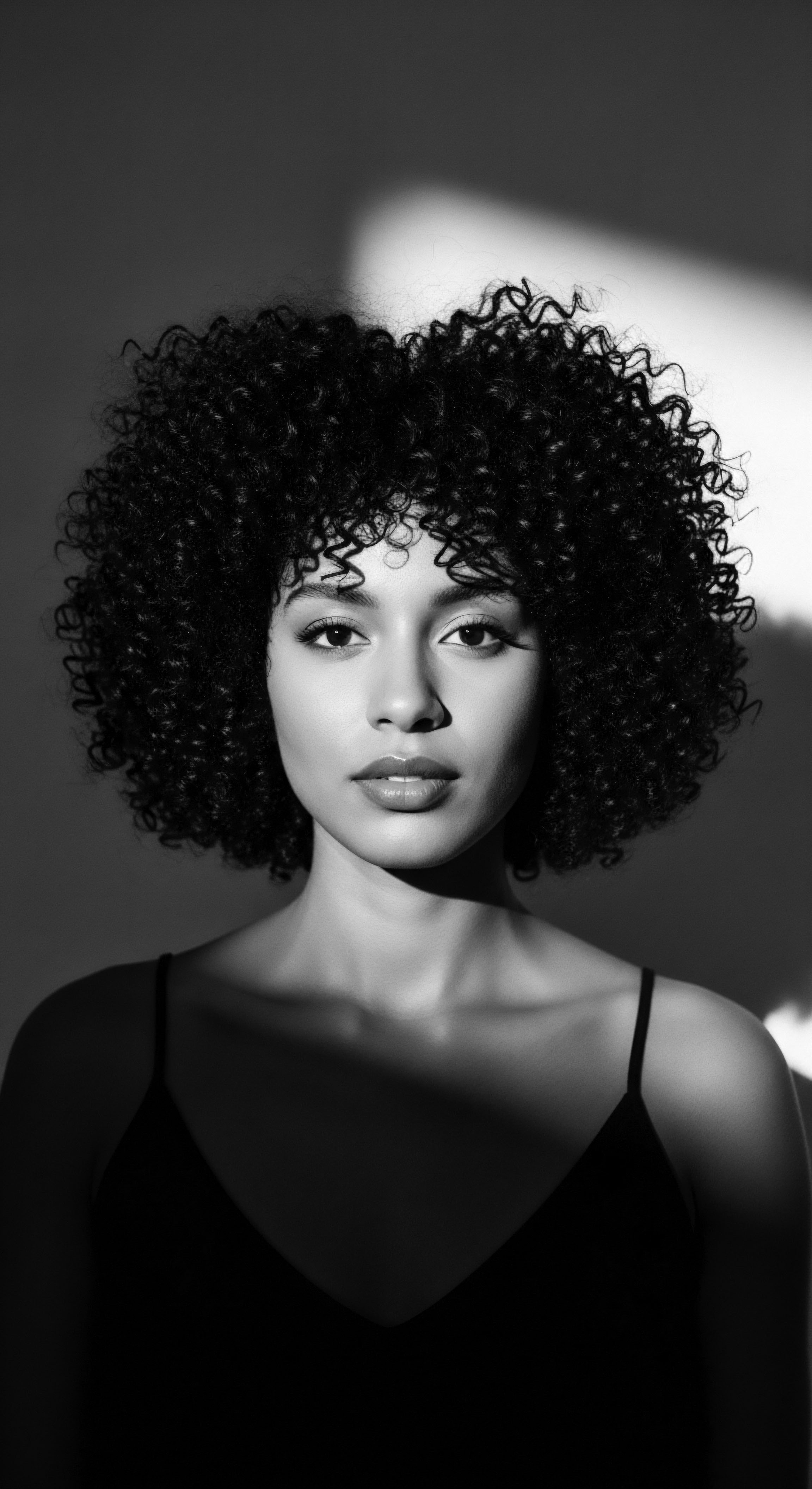
Academic
Within the Roothea lexicon, the academic delineation of Keratin extends beyond its biological description, delving into its profound anthropological and sociopolitical significance, particularly as it pertains to textured hair heritage. Keratin, from an expert perspective, is a family of highly diverse, sulfur-rich fibrous proteins that polymerize to form the intermediate filaments within epithelial cells, including those of the hair shaft. These proteins are characterized by their remarkable insolubility and resistance to degradation, providing exceptional mechanical strength and protective functions to tissues such as hair, nails, and the outer layers of skin.
Human hair is predominantly composed of alpha-keratins, specifically a complex interplay of acidic (Type I) and basic-to-neutral (Type II) Keratin proteins, along with a suite of Keratin-associated proteins (KAPs) that cross-link and stabilize the Keratin filaments. The precise ratio and spatial arrangement of these components, influenced by genetic predispositions and the elliptical morphology of the hair follicle, dictate the unique three-dimensional helical structure of each individual hair strand, manifesting as the spectrum of straight, wavy, curly, and coily textures observed across human populations.
This complex proteinaceous architecture, particularly the density and distribution of disulfide bonds between cysteine residues, fundamentally underpins the curl elasticity and mechanical properties of textured hair. A greater number of disulfide bonds and their asymmetrical distribution within the hair shaft contribute to the pronounced coiling and robust springiness characteristic of highly textured strands. This intricate biological reality provides the material basis for hair’s extraordinary versatility, allowing it to be shaped, braided, and manipulated into myriad forms, a physical attribute that has been historically leveraged for purposes far beyond mere adornment.
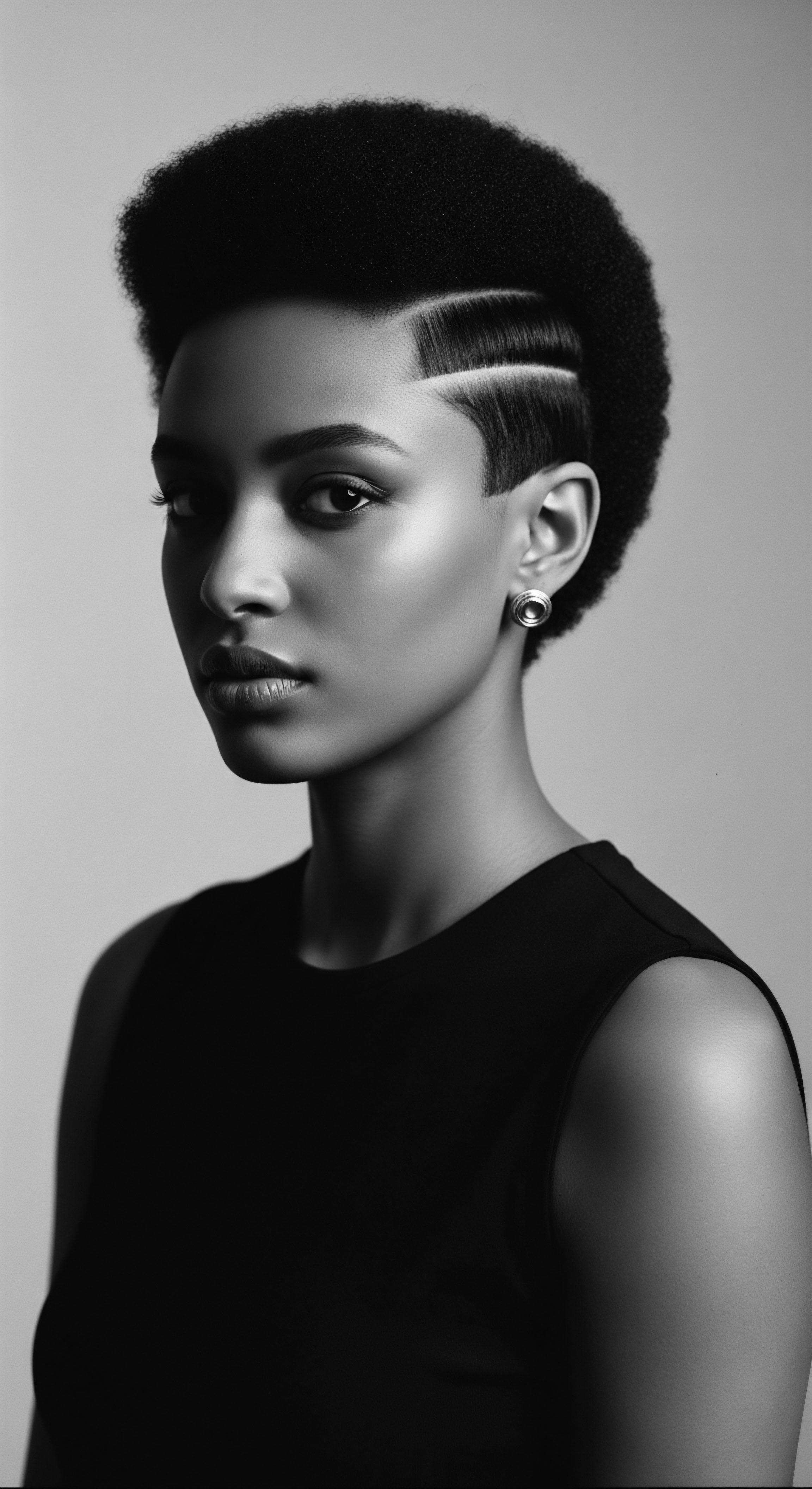
The Molecular Cartography of Curls and Coils
The intrinsic curvature of textured hair is not a random occurrence; it is encoded within the very genetic blueprint that guides Keratin formation and assembly. Research has identified specific genetic variations that influence hair texture, with polymorphisms in genes such as TCHH (Trichohyalin) and KRTAP (Keratin-Associated Proteins) playing a significant role in determining the degree of curl. Trichohyalin, for example, is a protein involved in the cross-linking of Keratin filaments, providing mechanical strength to hair follicles. Variations in this gene can account for a percentage of hair curl and morphology differences.
The elliptical cross-section of the hair follicle in individuals with curly or coily hair creates an uneven growth environment, leading to differential Keratinization and a helical growth pattern. This structural asymmetry at the follicular level translates into the macroscopic curl, making each bend and coil a biological signature of inherited lineage. The science of Keratin thus offers a lens through which to appreciate the remarkable genetic diversity that expresses itself in the rich tapestry of human hair textures, a diversity that has been shaped by millennia of evolutionary pressures and environmental adaptations.
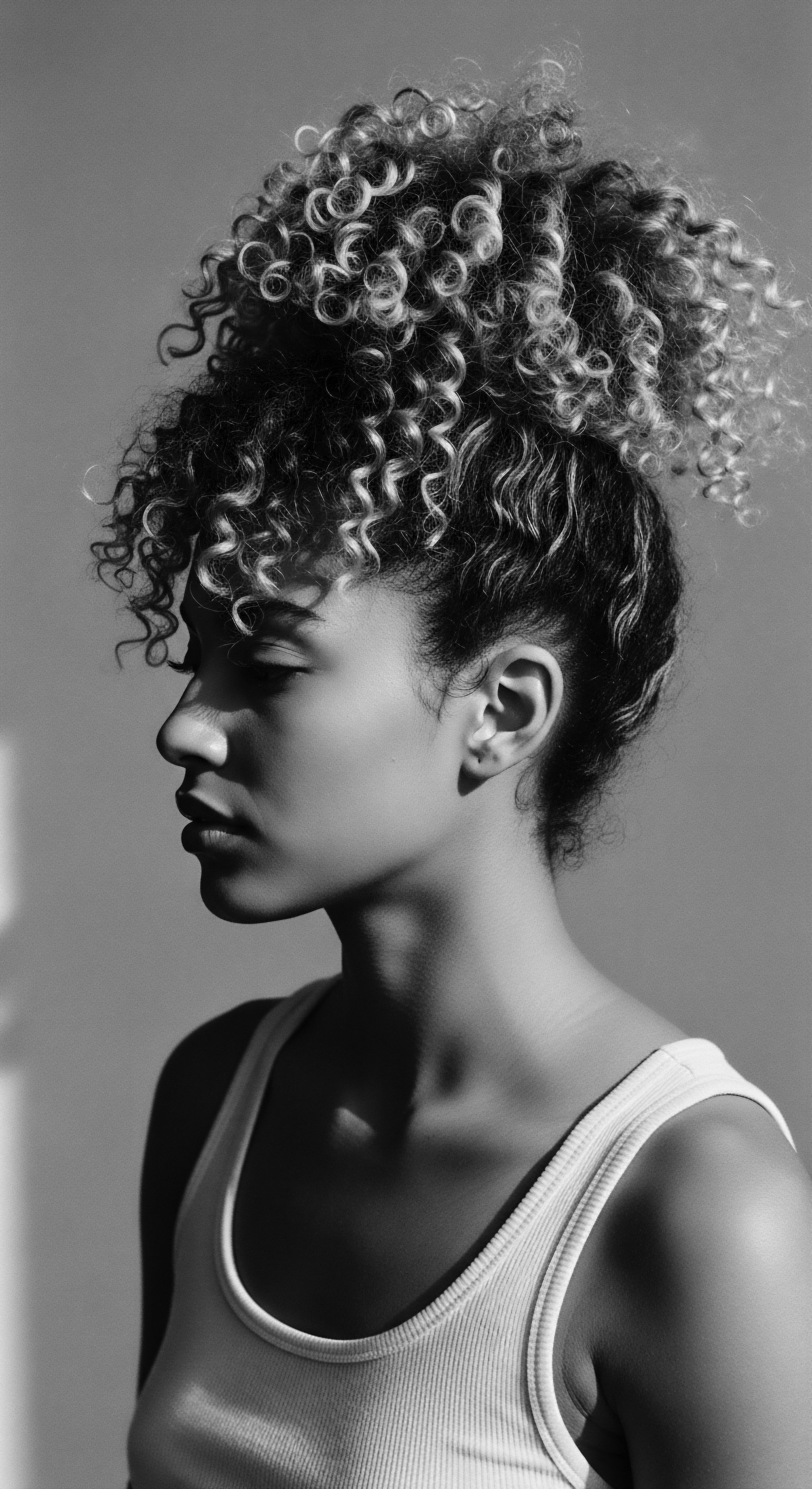
Epigenetics and the Ancestral Hair Code
While genetics lay the foundation for hair texture, epigenetic factors – environmental influences that modify gene expression without altering the underlying DNA sequence – may also contribute to the long-term health and appearance of Keratinized hair. The cumulative effects of ancestral diets, environmental stressors, and traditional care practices, while not directly altering the Keratin protein sequence, could theoretically influence the overall resilience and vitality of hair over generations. This perspective invites a holistic understanding, where biological predisposition meets lived experience, creating a unique heritage within each strand.
For example, nutritional deficiencies experienced by ancestors could have subtly impacted the Keratin production or the health of the hair follicle, leading to hair that was more susceptible to damage. Conversely, generations of consistent, nourishing care using traditional remedies might have contributed to a legacy of robust hair health, a testament to the intergenerational impact of wellness practices. This concept expands the scientific understanding of Keratin beyond a static structure, viewing it as a dynamic expression of ancestral and environmental interaction.
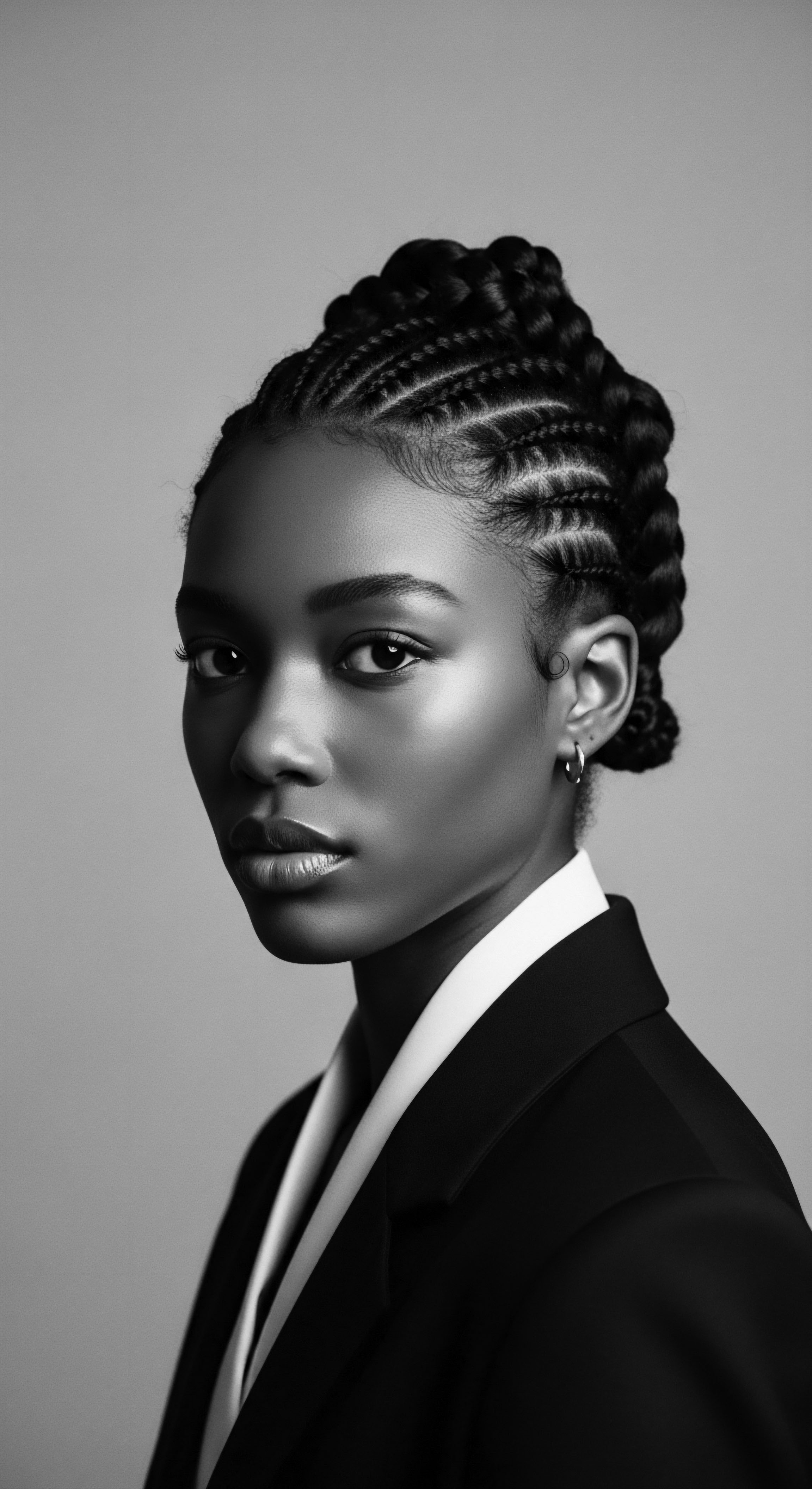
The Sociopolitical Semiotics of Keratin ❉ A History of Adornment and Resistance
The physical properties of Keratin, enabling hair to be intricately styled and hold its form, have rendered textured hair a powerful canvas for cultural expression, communication, and, critically, resistance throughout history. Hair is never merely a biological artifact; it is a profound social statement, imbued with layers of meaning that shift across time and geography. For Black and mixed-race communities, hair, and its Keratin-rich architecture, has served as a tangible link to ancestral identity, a symbol of pride, and a tool for survival against oppressive forces.
During the brutal era of transatlantic slavery, the hair of enslaved Africans, with its inherent Keratin structure allowing for complex braiding, became an extraordinary instrument of covert communication and rebellion. Stripped of their languages, families, and dignities, enslaved people found ingenious ways to maintain their cultural heritage and strategize for freedom through their hair. This historical period provides a compelling case study of Keratin’s role in facilitating resistance.
In a powerful demonstration of human ingenuity and the physical capabilities of Keratin-rich hair, enslaved African women would meticulously braid messages and maps into their cornrows. These intricate patterns, often resembling the paths and waterways of the land, served as secret guides for escape. For instance, in colonial Colombia, Benkos Biohó, an African king who escaped slavery, established a free community called San Basilio de Palenque.
His community utilized braided hairstyles to convey escape routes and intelligence. This practice was not an isolated incident; similar accounts exist across the diaspora.
The very Keratin of textured hair, through its capacity for complex styling, became an enduring medium for resistance and the preservation of ancestral knowledge during times of profound oppression.
The physical properties of the hair—its natural curl, its ability to hold a braided shape for extended periods, and its relative resistance to unraveling—were instrumental in making these “maps” effective and discreet. The Keratin structure allowed for the formation of stable, recognizable patterns that could be read by those who understood the code, while remaining innocuous to slave owners who dismissed Black hair as “unruly” or “unkept.” This historical example underscores the profound dualism of Keratin ❉ a biological protein that, in the context of textured hair, became a silent, yet powerful, weapon against dehumanization.
Moreover, the hair itself became a repository for survival. Enslaved women would sometimes braid seeds and grains into their hair, smuggling them from plantations to sustain themselves and establish food sources upon escape. This act speaks volumes about the inherent capacity of Keratin-rich hair to serve not just as a cultural symbol, but as a practical tool for survival and the literal planting of new roots.
The systemic attempts to strip enslaved Africans of their hair, through shaving or forced covering, were direct assaults on their identity and cultural connection. Yet, the resilience of hair, grounded in its Keratin structure, and the unwavering spirit of those who wore it, meant that these efforts often failed to erase the deeper significance. Hair became a continuous thread of resistance, a silent defiance against the erasure of heritage.
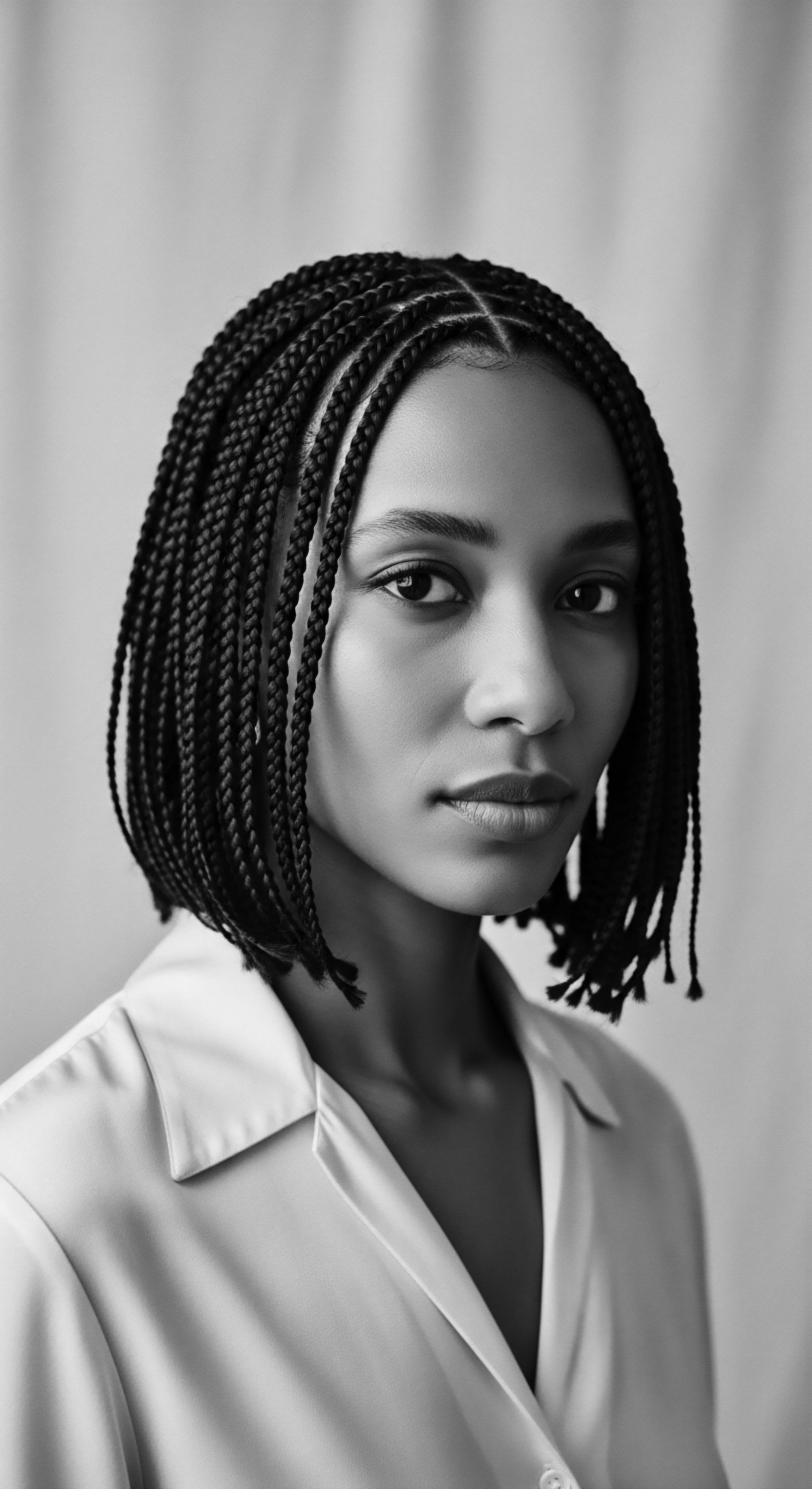
Reclaiming the Helix ❉ Contemporary Implications and Future Reverence
In contemporary times, the Keratin of textured hair continues to be a site of both scientific inquiry and cultural affirmation. The natural hair movement, a powerful social and cultural phenomenon, directly challenges Eurocentric beauty standards that historically devalued coily and curly textures. This movement, at its core, is a reclamation of the inherent beauty and strength of Keratin in its diverse forms. It recognizes that the natural elasticity and volume of textured hair, enabled by its unique Keratin architecture, are not deficiencies to be “tamed” or “straightened,” but rather qualities to be celebrated.
Understanding the science of Keratin in textured hair empowers individuals to develop care routines that genuinely support its unique needs, rather than attempting to force it into unnatural forms. This includes practices that reinforce disulfide bonds, maintain cuticle integrity, and provide adequate moisture, all of which preserve the hair’s natural Keratin structure. The continued exploration of Keratin’s molecular intricacies, particularly in the context of diverse hair textures, offers avenues for creating products and practices that honor ancestral wisdom while leveraging modern scientific understanding. This convergence of ancient knowledge and contemporary research allows for a deeper, more respectful relationship with hair, fostering a sense of pride in one’s heritage.
This academic exploration of Keratin, therefore, transcends mere biochemistry. It becomes a testament to the enduring power of human hair as a biological marvel, a cultural artifact, and a symbol of unwavering identity and resistance across generations. The story of Keratin in textured hair is a vibrant chapter in the larger human story, a testament to resilience, adaptation, and the persistent spirit of cultural self-expression.
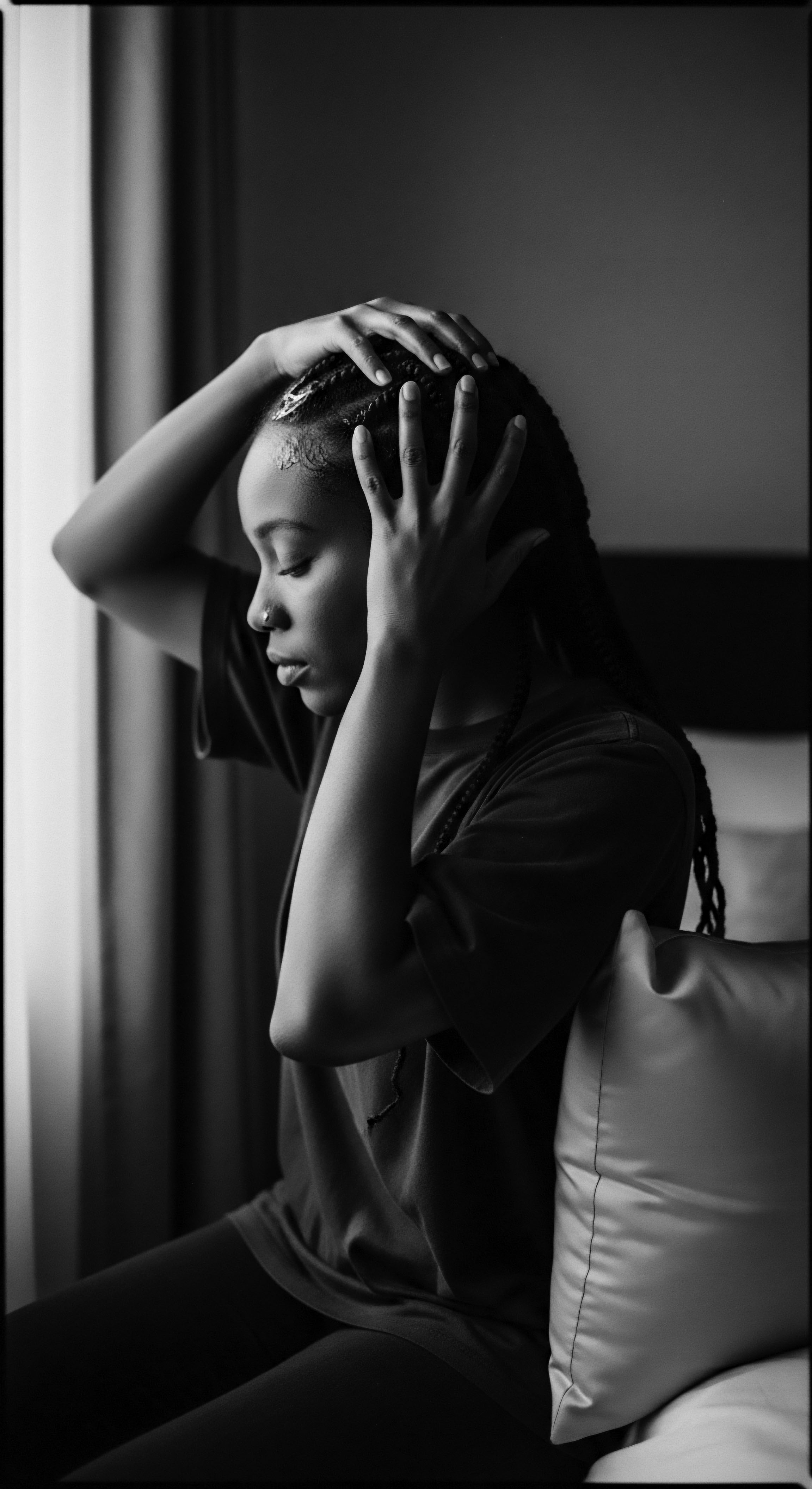
Reflection on the Heritage of Keratin
The journey through Keratin’s meaning, from its elemental biological definition to its profound cultural resonance, reveals a truth held close to the heart of Roothea’s ‘living library’ ❉ hair is never simply a collection of cells and proteins. Each curl, every coil, every resilient strand of textured hair carries within its very Keratin a living memory, an echo of ancestral practices, and a testament to enduring spirit. The ‘Soul of a Strand’ ethos reminds us that understanding Keratin is not a detached scientific exercise; it is an act of reverence, a communion with the past that shapes our present and informs our future.
Consider the silent wisdom passed down through generations of hands tending to hair, hands that intuitively understood how to protect the Keratin within, ensuring strength and vitality. These were not abstract concepts, but embodied knowledge, woven into the fabric of daily life, communal gatherings, and rites of passage. The strength that allowed enslaved peoples to braid maps of freedom into their hair, a resilience rooted in Keratin’s very structure, speaks to a profound connection between our physical being and our collective history. It is a story of defiance, ingenuity, and unwavering identity, written in the language of hair itself.
As we continue to unravel the molecular complexities of Keratin, we simultaneously rediscover the depth of ancestral wisdom. Modern science often affirms what our forebears knew through observation and intuition ❉ that the proper care of hair, particularly textured hair, requires a gentle touch, nourishing ingredients, and a deep respect for its unique architecture. This holistic perspective, blending scientific insight with cultural appreciation, empowers us to approach hair care not as a chore, but as a sacred ritual, a continuation of a lineage of care that stretches back through time.
The Keratin in our hair is more than a protein; it is a symbol of continuity, a physical link to the journeys of those who came before us. It embodies the beauty, strength, and adaptability of textured hair, reminding us that our strands are not just ours alone, but a shared heritage, a vibrant declaration of who we are and where we come from. To care for our Keratin is to honor our ancestors, to celebrate our identity, and to carry forward the rich, unbound helix of our collective story.
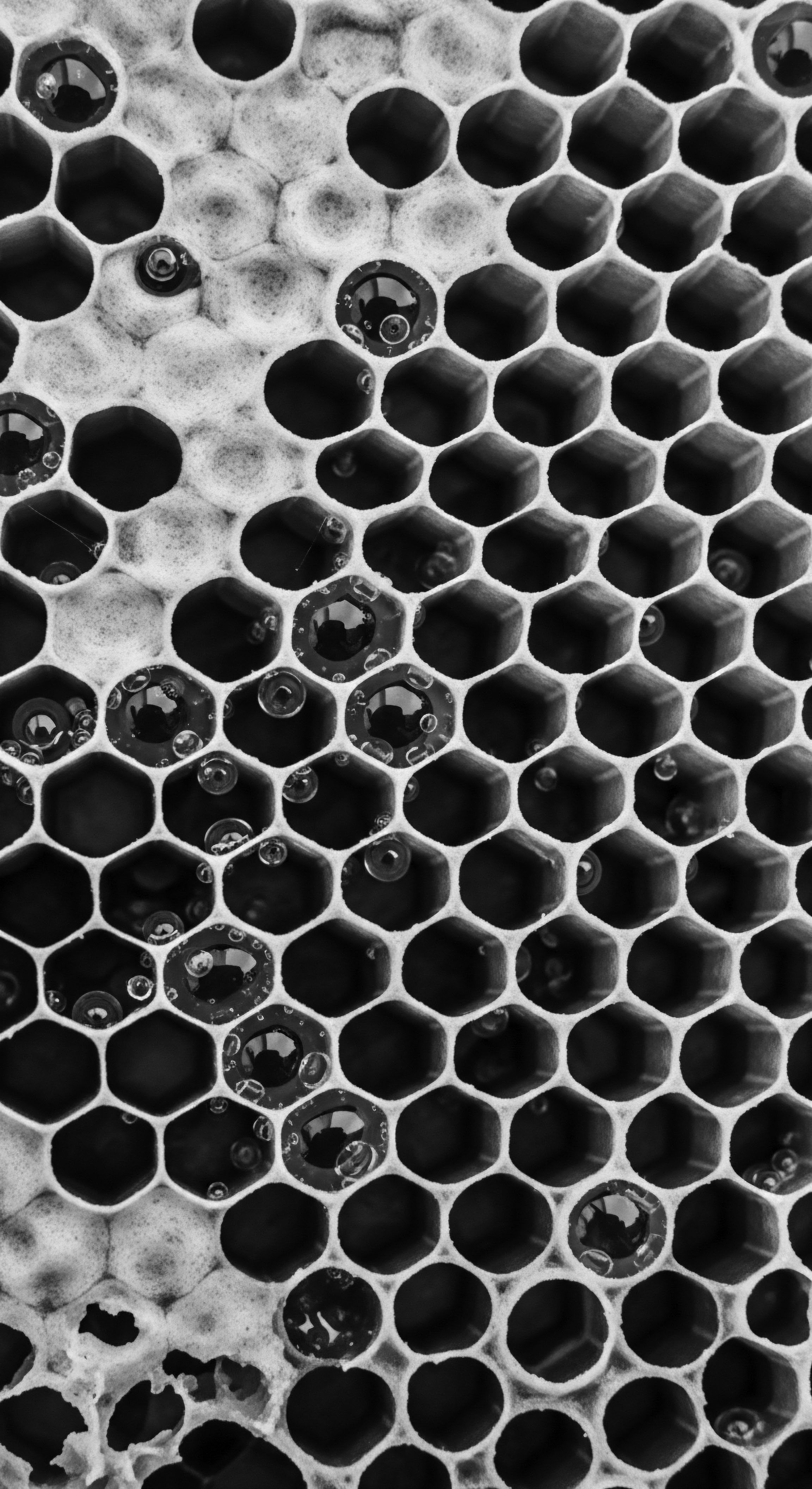
References
- Byrd, A. D. & Tharps, L. (2001). Hair Story ❉ Untangling the Roots of Black Hair in America. St. Martin’s Press.
- Banks, I. (2000). Hair Matters ❉ Beauty, Power, and Black Women’s Consciousness. New York University Press.
- Goodman, R. (2010). The Chemistry of Hair. Royal Society of Chemistry.
- Robbins, C. R. (2012). Chemical and Physical Behavior of Human Hair. Springer.
- Rogers, G. E. (2006). Hair Keratins and their Genes. International Journal of Dermatology, 45(1), 1-13.
- Tosti, A. & Camacho, F. M. (2007). Hair and Scalp Diseases ❉ Medical, Surgical, and Aesthetic Aspects. Taylor & Francis.
- Winkelmann, R. K. (1988). The Hair Follicle. Journal of Investigative Dermatology, 90(2), 1-13.
- Lasisi, T. (2022). Untangling Race From Hair. Sapiens.org.
- Hardy, D. (1973). Quantitative Studies on the Shape of Hair Fibers. American Journal of Physical Anthropology, 39(1), 7-17.
- Powell, B. C. Rogers, G. E. & Rogers, G. E. (1997). The Keratin-Associated Proteins (KAPs) of Hair ❉ An Update. Journal of Investigative Dermatology, 109(3), 329-335.
